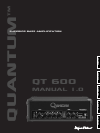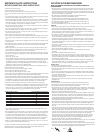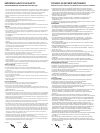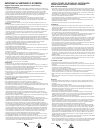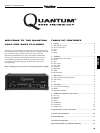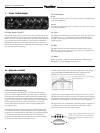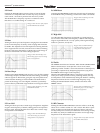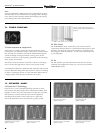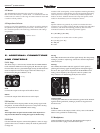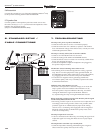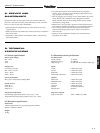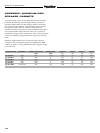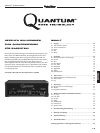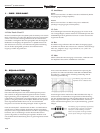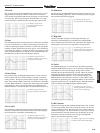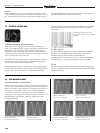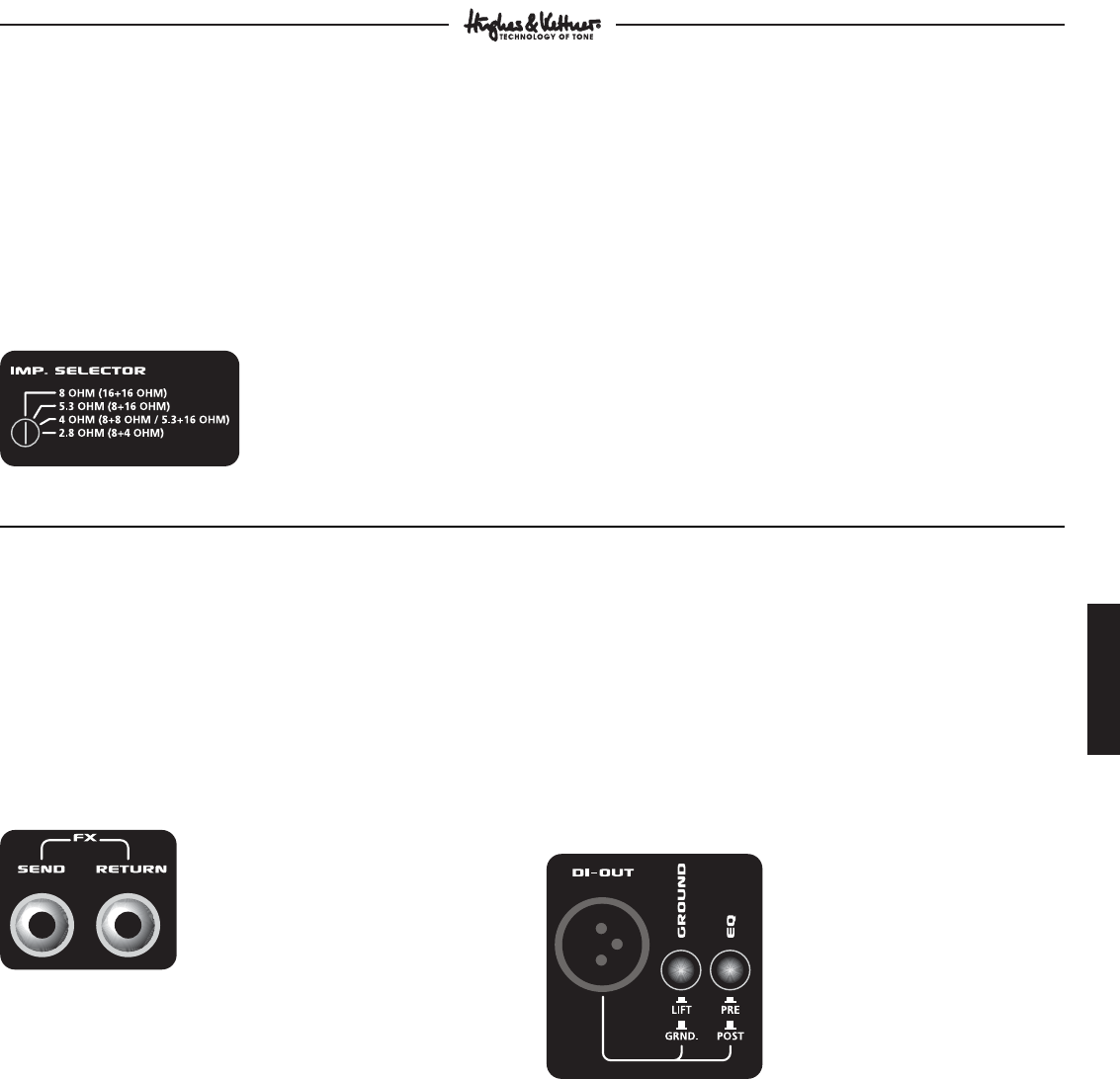
4.2 Master
The MASTER knob determines the overall level of the amp.
But it’s more than merely a volume knob – in combination with the
GAIN control, it makes a wide range of nuances between clean and
overdrive-sounds possible.
4.2 Impedance Selector
On the reverse of the QT600 there is a selector switch for matching
the QT600 to the impedance (load, resistance, “ohm number”) of
the connected speakers. The following combinations and settings
are possible:
To achieve full sound quality, correct impedance matching absolutely
must be assured, as mismatching prevents the optimal functioning
of the Dynavalve™ concept. An incorrectly matched impedance
leads to incorrect feedback between the amp and speaker, which
results in unsatisfactory tone or inadequate volume.
Note:
Speaker cabinets are generally in parallel. To calculate the total
resistance of two parallel speakers (R1, R2), multiply the individual
resistances, and divide the resulting product by the sum of the
individual resistances. The following formula applies:
R = ( R1 x R2 ) / ( R1 + R2 )
For example, for an 8 ohm and a 16 ohm speaker:
R = ( 8 x 16 ) / ( 8 + 16 )
R = 128 / 24
R = 5.33
ENGLISH
Quantum
TM
QT 600 Manual
Impedance Selector
5. Additional connections
and controls
5.1 Fx Loop
The effects loop is a serial circuit, located after the TUBE GROWL
knob and before LINE OUT in the signal path. Because the signal
from the effects device is patched through serially, the effects balance
must be adjusted on the effects device itself. The effects loop is
footswitchable (Hughes & Kettner
®
FS 2).
Send
Connect this output to the input of the effects device.
Return
Connect the output of the effects device to this input.
5.2 Line Out
This unbalanced line output patches out the preamp signal inclu-
ding effects. Located before the Dynavalve™ amp in the circuitry,
it is independent of the MASTER control setting.
Note:
This output does not patch out the sound of the Dynavalve™
amp and is thus ideal for routing the signal to another amp.
5.3 Di Out
Use this balanced output to connect the QT600 to a mixer or stage
speaker. There are two modes to satisfy the needs of professional
on-stage use:
Pre-EQ
Set to PRE, the DI-OUT reads off the signal directly after the preamp,
making it possible to adjust stage sound and volume independent
of the mixer/PA.
Post-EQ
Set to POST, the DI-OUT reads the signal off “at the speaker,“
patching the full amp signal including effects and EQ through to
the mixer. The signal is thus dependent of the MASTER control
setting, and is shaped by the reciprocal action of speakers and
amp so decisive in determining the Dynavalve sound.
Ground switch
Activating the GROUND switch isolates the ground of the DI-OUT
signal from the ground lift, making it possible to suppress hum
should it occur.
5.4 Tuner
Connect a tuner to this output, which is always active. The MUTE
button can by pushed for muted tuning.
5.5 Headphones
Connect headphones to this jack. The QT600 speaker output is
deactivated when a plug is inserted into this jack.
Fx Loop
DI Out
9



